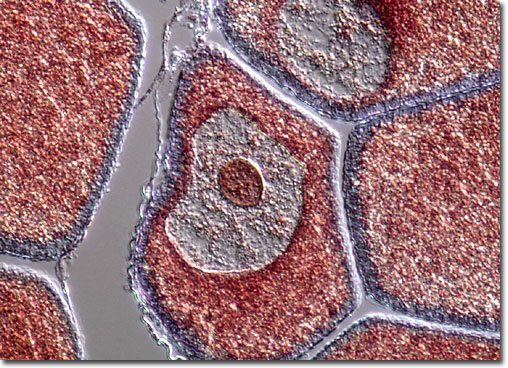|
Though capable of swimming, lancelets typically remain buried in the sand or mud that lines the ocean floors. To feed, they extend the anterior portion of their bodies upward out of the muck and the cilia that line their gill slits direct water toward their mouth openings. From the mouth, the water moves into the pharynx, the mucous membrane of the gill basket capturing edible organisms in the water and passing them onto the gut, where digestion begins with the aid of various enzymes. Unlike other chordates, lancelets are capable of phagocytosis, a digestive process in which individual cells consume food particles.
|
